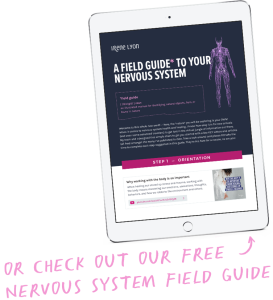Get a weekly dose of nervous system love
Every Monday you’ll get an email from us with new education, inspiration… plus time-sensitive updates so you never miss a beat!
© 2023 Scientuitive – Fitness & Wellness Education Inc. DBA Scientuitive Education Inc.
THIS WEBSITE AND ALL PROGRAM OFFERINGS ARE SUBJECT TO OUR TERMS OF SERVICE.
Testimonials or endorsements on this website have not been scientifically evaluated and results experienced vary significantly. Many statements outlined on this website are simply opinion.
CONTENT PRESENTED ON THIS WEBSITE OR OTHERWISE IS NOT A SUBSTITUTE FOR PROFESSIONAL MEDICAL ADVICE, DIAGNOSIS, OR TREATMENT OR A PROFESSIONAL THERAPEUTIC RELATIONSHIP. CONTENT PRESENTED IS INTENDED TO PROVIDE GENERAL HEALTH INFORMATION FOR EDUCATIONAL PURPOSES ONLY. IT SHOULD NOT BE USED AS A SUBSTITUTE FOR MEDICAL OR PSYCHIATRIC ADVICE, CANNOT DIAGNOSE OR TREAT ANY MEDICAL OR PSYCHIATRIC CONDITION, AND DOES NOT REPLACE CARE FROM YOUR PHYSICIAN.
You should not rely on content presented on this website or any program offered on this website for diagnosis or treatment of any health condition. We are not healthcare professionals or providers. Always consult a healthcare professional if you suspect you require medical or psychiatric treatment. If you believe or suspect you are experiencing an emergency, call your local emergency services immediately.

